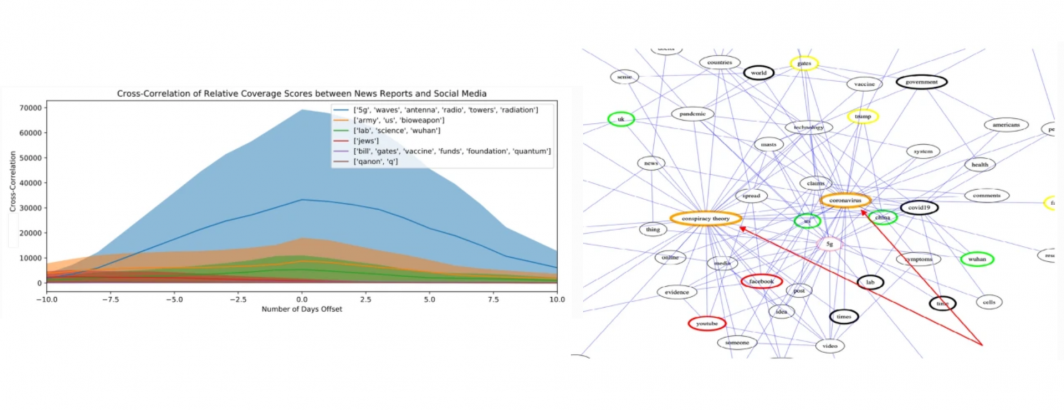
This fascinating analysis uses GDELT as an index to Covid-19 news, performing topic modeling on the resulting coverage and examining narrative evolution over time compared with mainstream news:
Rumors and conspiracy theories thrive in environments of low confidence and low trust. Consequently, it is not surprising that ones related to the COVID-19 pandemic are proliferating given the lack of scientific consensus on the virus’s spread and containment, or on the long-term social and economic ramifications of the pandemic. Among the stories currently circulating in US-focused social media forums are ones suggesting that the 5G telecommunication network activates the virus, that the pandemic is a hoax perpetrated by a global cabal, that the virus is a bio-weapon released deliberately by the Chinese, or that Bill Gates is using it as cover to launch a broad vaccination program to facilitate a global surveillance regime. While some may be quick to dismiss these stories as having little impact on real-world behavior, recent events including the destruction of cell phone towers, racially fueled attacks against Asian Americans, demonstrations espousing resistance to public health orders, and wide-scale defiance of scientifically sound public mandates such as those to wear masks and practice social distancing, countermand such conclusions. Inspired by narrative theory, we crawl social media sites and news reports and, through the application of automated machine-learning methods, discover the underlying narrative frameworks supporting the generation of rumors and conspiracy theories. We show how the various narrative frameworks fueling these stories rely on the alignment of otherwise disparate domains of knowledge, and consider how they attach to the broader reporting on the pandemic. These alignments and attachments, which can be monitored in near real time, may be useful for identifying areas in the news that are particularly vulnerable to reinterpretation by conspiracy theorists. Understanding the dynamics of storytelling on social media and the narrative frameworks that provide the generative basis for these stories may also be helpful for devising methods to disrupt their spread.